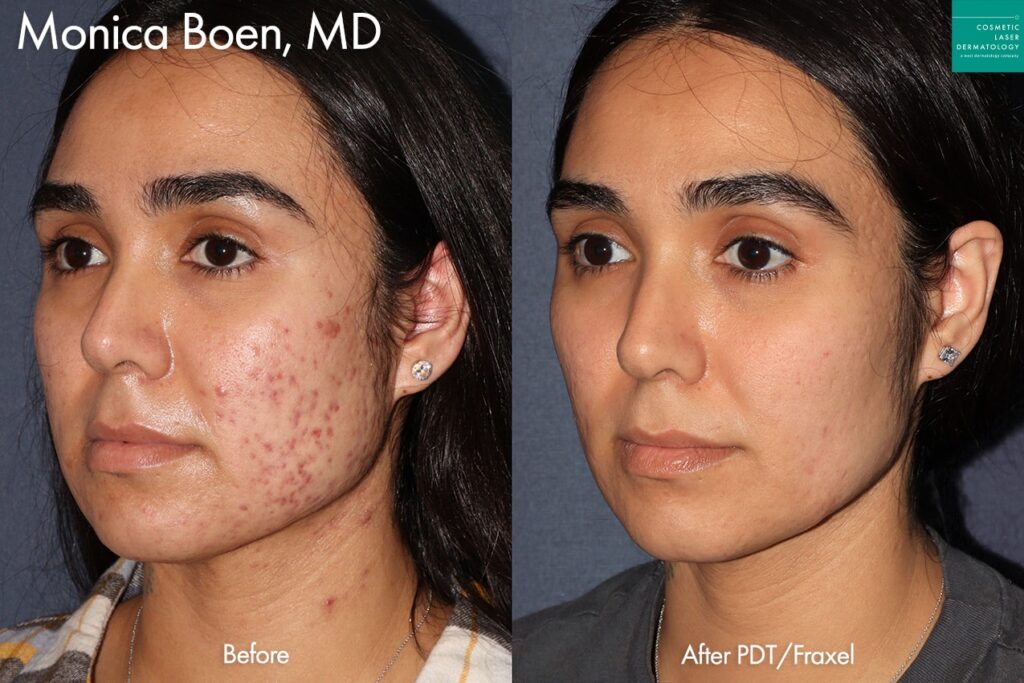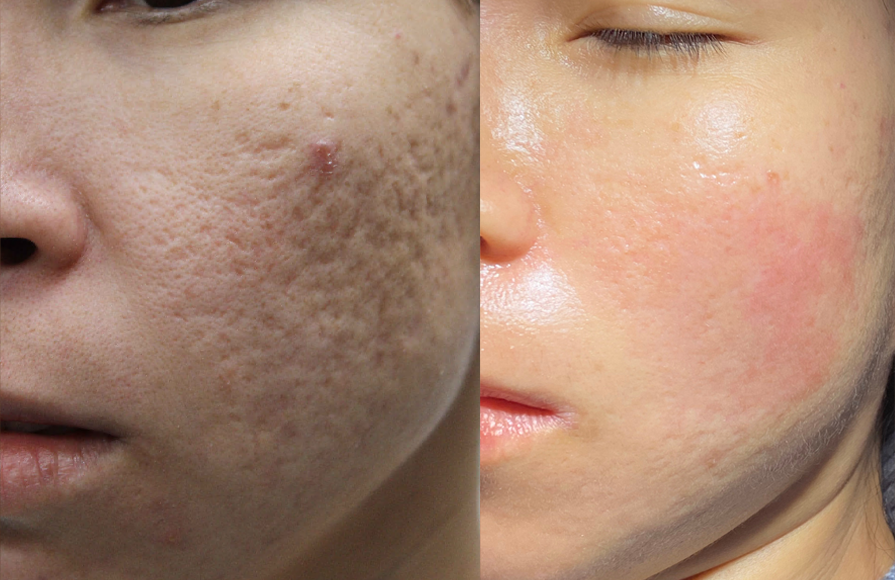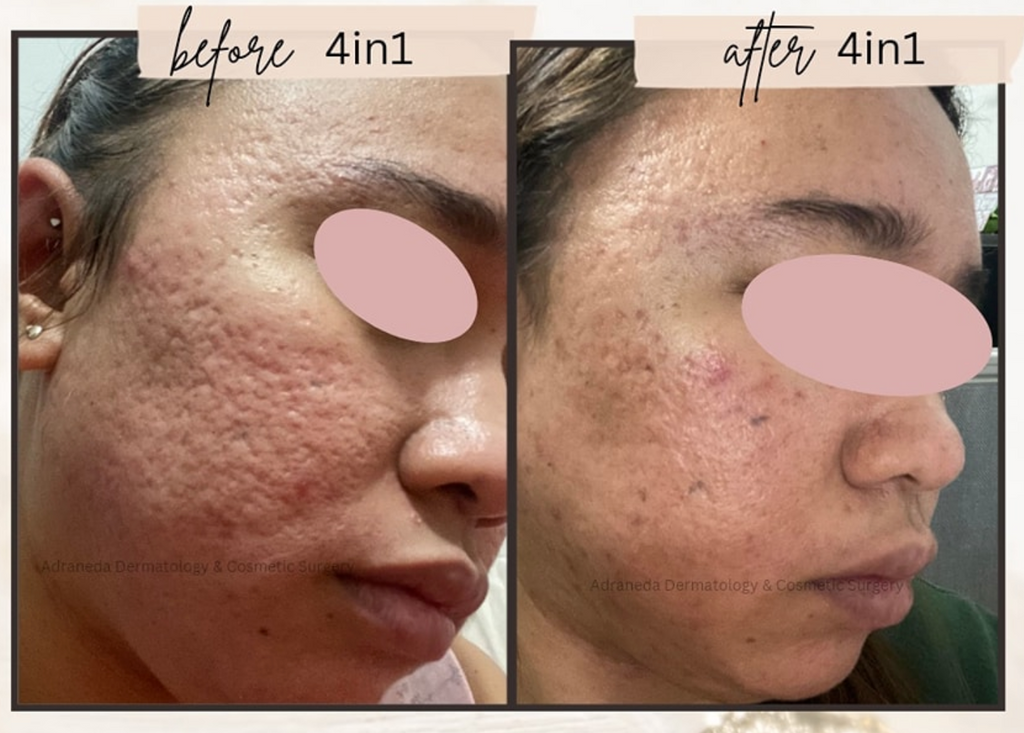Comprehending the Numerous Skin Problem and Effective Therapy Options for Acne Marks
Acne scars stand for a complex interplay of skin disease that substantially impact individuals' self-worth and overall skin health and wellness. Understanding the unique sorts of acne scars-- hypertrophic and atrophic-- along with their underlying causes, is essential for identifying reliable treatment methods. Various healing alternatives exist, ranging from innovative dermatological procedures to natural treatments. The effectiveness of these therapies frequently hinges on tailored analyses by certified professionals. As we check out the landscape of acne mark monitoring, it comes to be evident that the journey toward clearer skin may include even more than simply topical remedies.
Types of Acne Scars

On the other hand, hypertrophic marks result from an overflow of collagen throughout the healing procedure, causing raised locations on the skin. These marks are commonly firm and can vary in shade, in some cases showing up red or darker than the surrounding skin.
Recognizing these kinds of acne marks is essential for creating an effective therapy plan - acne and acne scars treatment. Alternatives may consist of chemical peels, laser therapy, microneedling, or facial fillers, customized to the particular mark type. A thorough examination with a dermatologist can help figure out the most suitable treatment, considering the person's skin type, mark extent, and total skin health and wellness
Reasons For Acne Scarring
Marking takes place as an outcome of the body's all-natural recovery reaction to inflammation and injury created by acne sores. When acne kinds, it causes an inflammatory reaction, leading to the release of different cytokines and development aspects that advertise healing. This process can often lead to too much cells formation or insufficient fixing, resulting in marks.
The key reasons for acne scarring include the extent of the acne itself, period of the sores, and private skin kinds. Extreme inflammatory acne, such as blemishes and cysts, is more probable to lead to scarring because of deeper tissue damage. Additionally, inappropriate handling of acne sores, such as picking or pressing, can exacerbate cells injury and inflammation, increasing the chance of scarring.
Hereditary proneness likewise plays a considerable role; people with a family members background of scarring are at a greater risk. In addition, skin kind and color can affect mark development, as darker skin tones may experience post-inflammatory hyperpigmentation, while lighter skin might establish atrophic scars.
Ultimately, recognizing these reasons is important in taking care of acne and mitigating the possibility for scarring.

Therapy Options for Scarring
Effective therapy alternatives for acne scarring vary depending upon the type and seriousness of the scars. Usually classified right into atrophic, hypertrophic, and keloid scars, these conditions call for customized methods for optimum outcomes.
For atrophic scars, which are characterized by a loss of tissue, treatments such as chemical peels, microdermabrasion, and laser treatment are commonly employed. These techniques promote skin revival and promote collagen production, thus enhancing skin structure. Subcision, a minimally intrusive treatment, can likewise be effective by separating fibrous bands below the skin.
Hypertrophic and keloid marks can be much more testing to treat. Alternatives consist of corticosteroid shots to decrease inflammation and flatten the scars. In many cases, cryotherapy or laser treatment may be advised to reduce their appearance.
Surgical options are offered for serious scarring, where excision or skin grafting might be needed. It's vital for people to talk to a skin doctor to assess their details mark kind and review one of the most ideal treatment strategy. Combining numerous check my source therapies frequently produces the finest results, making certain that each individual's unique skin problem is attended to successfully.
Natural Remedy and Natural Solutions
Natural remedies and home solutions can supply an obtainable approach for individuals seeking to boost the appearance of acne scars (acne treatment for sensitive skin). Numerous ingredients discovered in the home kitchen have demonstrated potential benefits in enhancing skin structure and promoting recovery

An additional reliable alternative is lemon juice, which works as an all-natural exfoliant and can lighten hyperpigmentation. It needs to be used meticulously, as it may create photosensitivity. Oatmeal masks are additionally advantageous; their mild exfoliation can aid remove dead skin cells while relaxing irritation.
Vital oils, such as tea tree oil and lavender oil, can even more sustain scar recovery due to their antimicrobial properties. It is vital to carry out a spot test prior to applying any kind of treatment to guarantee there are no negative reactions. These natural options can be a complementary method in the trip to diminish acne scars.
Protecting Against Future Scarring
Taking on an aggressive method to skincare can substantially reduce the danger of developing future acne scars. Routine cleaning, exfoliation, and hydration can assist maintain skin health and wellness and avoid stopped up pores.
Furthermore, preventing the lure to squeeze or pick acne lesions is important, as this can bring about swelling and succeeding scarring. Rather, people ought to concentrate on using topical treatments that promote recovery and minimize swelling. Components such as salicylic acid, benzoyl peroxide, and retinoids are understood for their effectiveness in handling acne and reducing scars.
Sunlight defense is an additional crucial element; exposure to UV rays can darken scars and hinder recovery. For that reason, using a broad-spectrum sunscreen daily can reduce these effects - acne scars.
Finally, maintaining a healthy and balanced diet plan rich in anti-oxidants and staying moisturized supports skin regeneration. By applying these safety nets, individuals can considerably decrease their risk of future scarring and promote total skin health.
Conclusion
In verdict, a comprehensive understanding of acne scars, including both hypertrophic and atrophic kinds, is vital for effective therapy strategies. Assessment with a skin doctor stays imperative to design personalized methods that consider specific skin kinds and mark extent, inevitably enhancing the efficacy of mark monitoring strategies.
Acne scars represent a complex interplay of skin conditions that considerably effect individuals' self-confidence and total skin health and wellness. The two main groups of acne marks are hypertrophic and atrophic marks. These scars are more identified right into three subtypes: ice choice scars, which are deep and narrow; boxcar scars, which are broader and have distinct sides; and rolling see this website scars, which create a wave-like look due to irregular skin appearance.
A thorough consultation with a skin doctor can aid figure out the most proper intervention, taking right into account the person's skin type, scar extent, and general skin health and wellness.
Consultation my latest blog post with a skin doctor continues to be imperative to design individualized methods that consider individual skin kinds and scar extent, eventually enhancing the efficiency of scar monitoring methods.